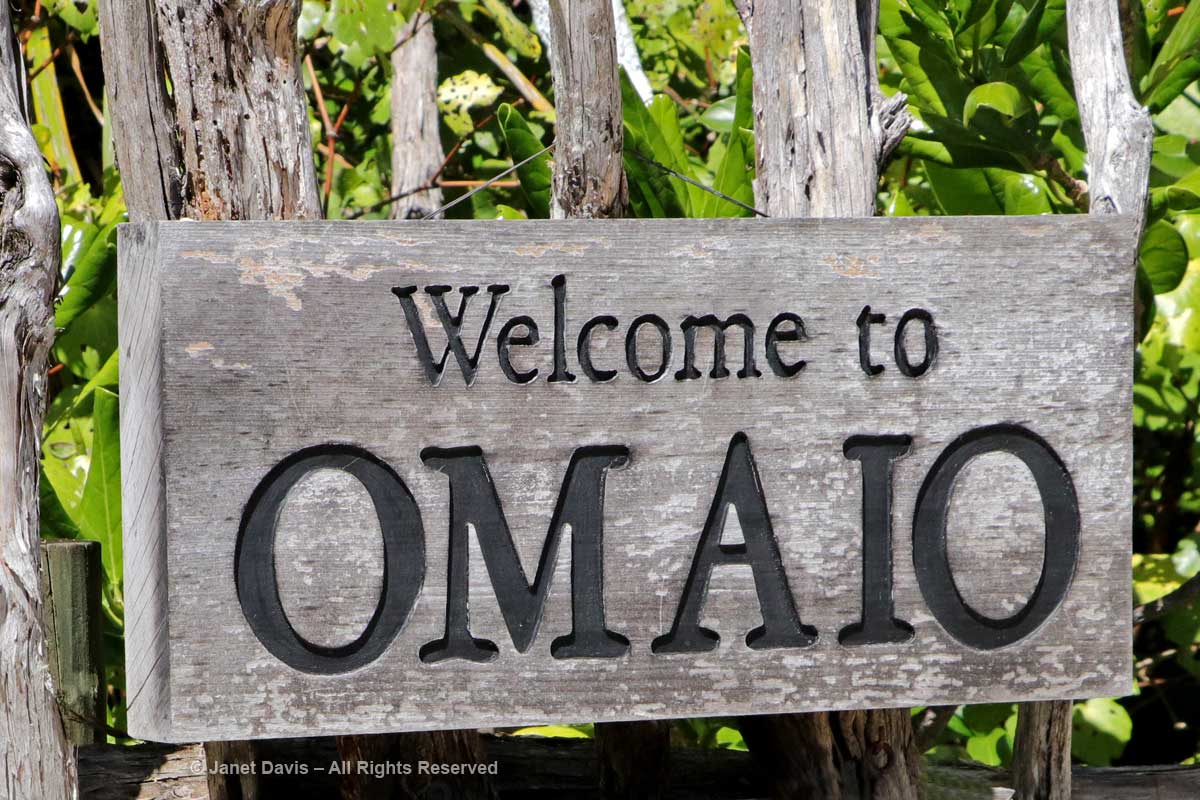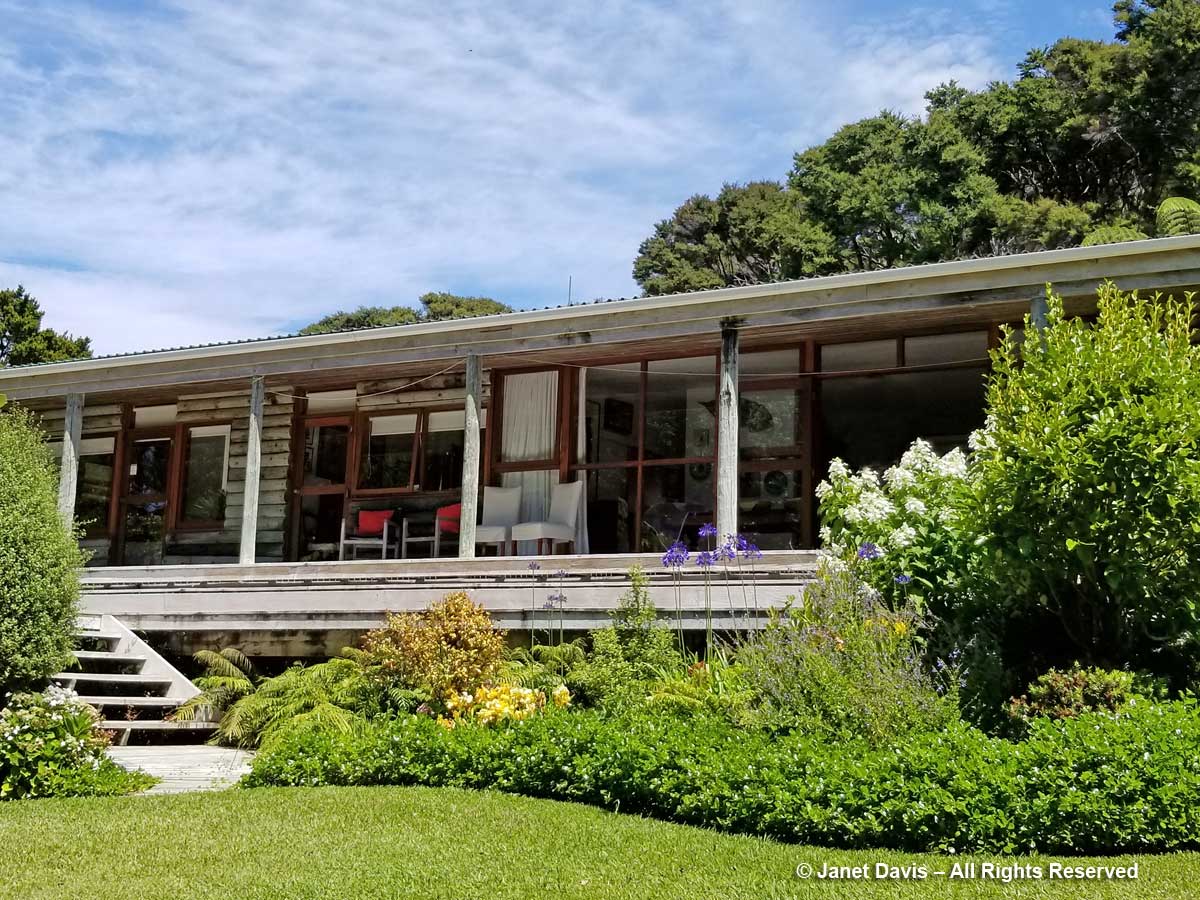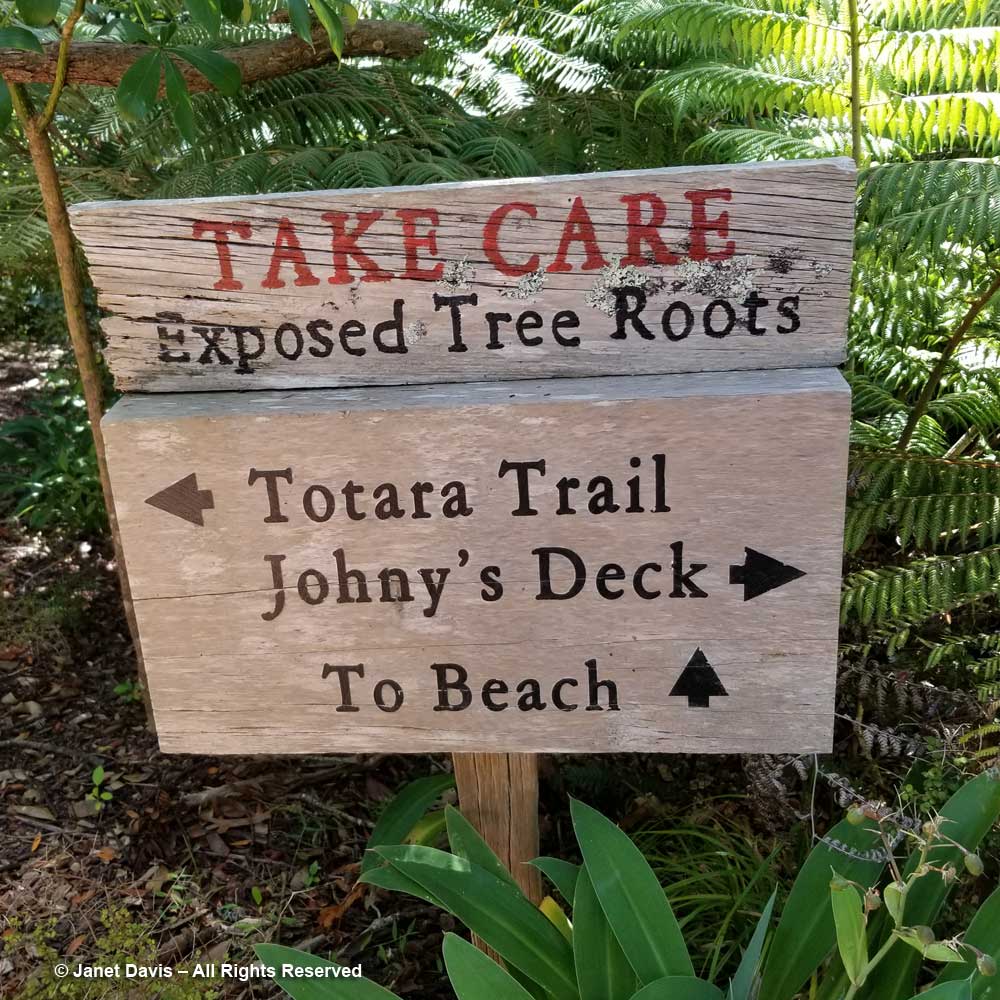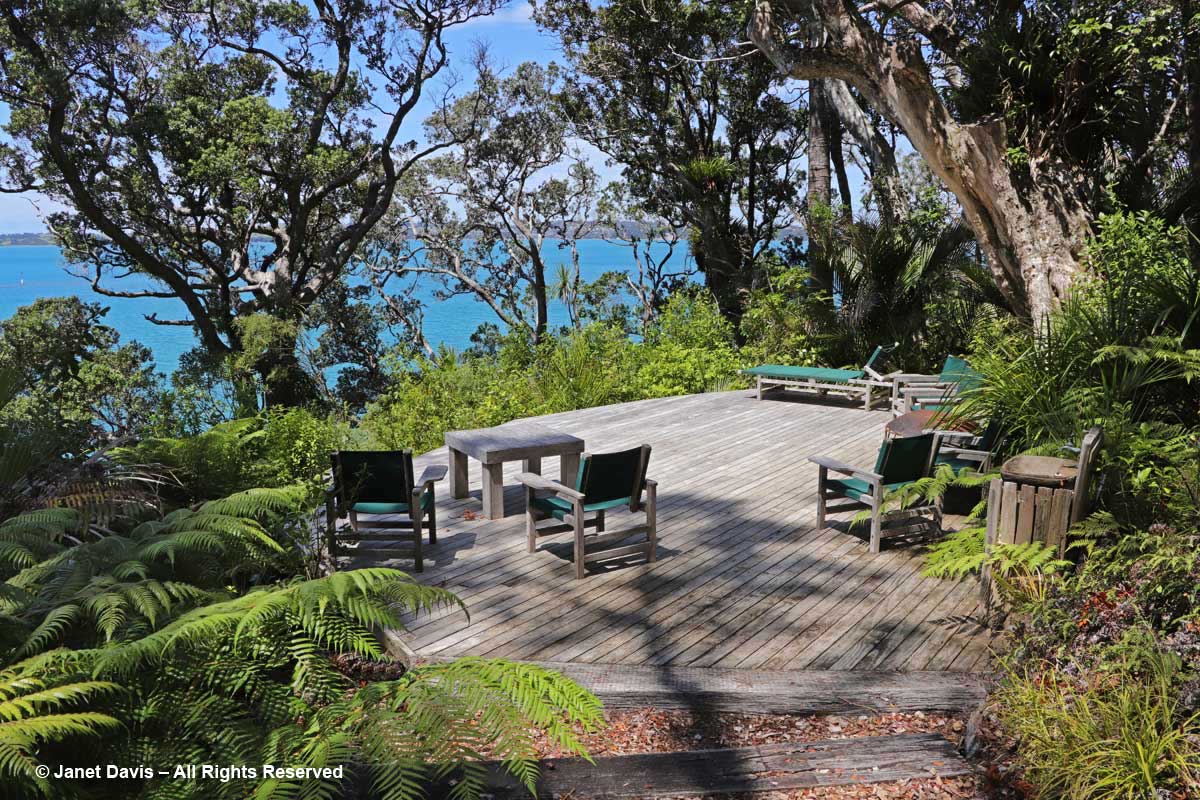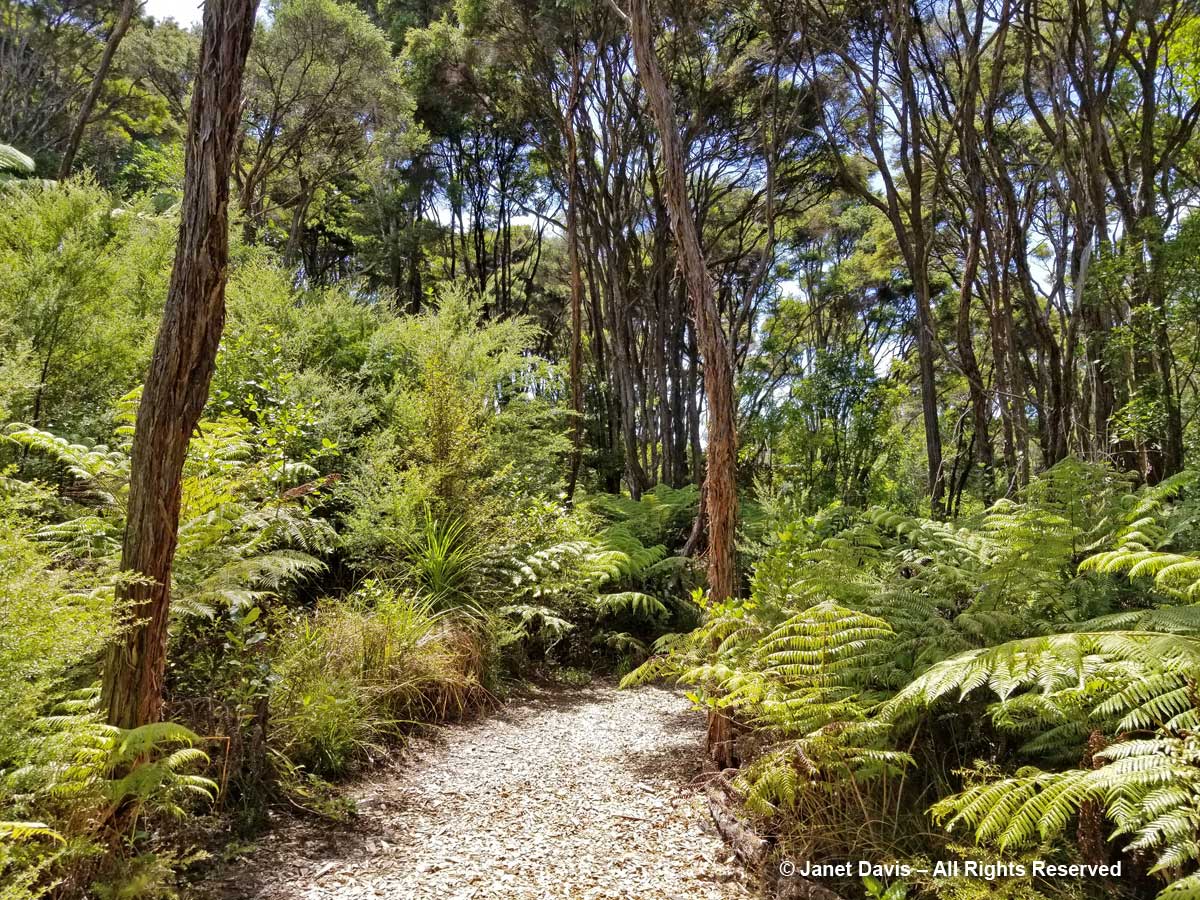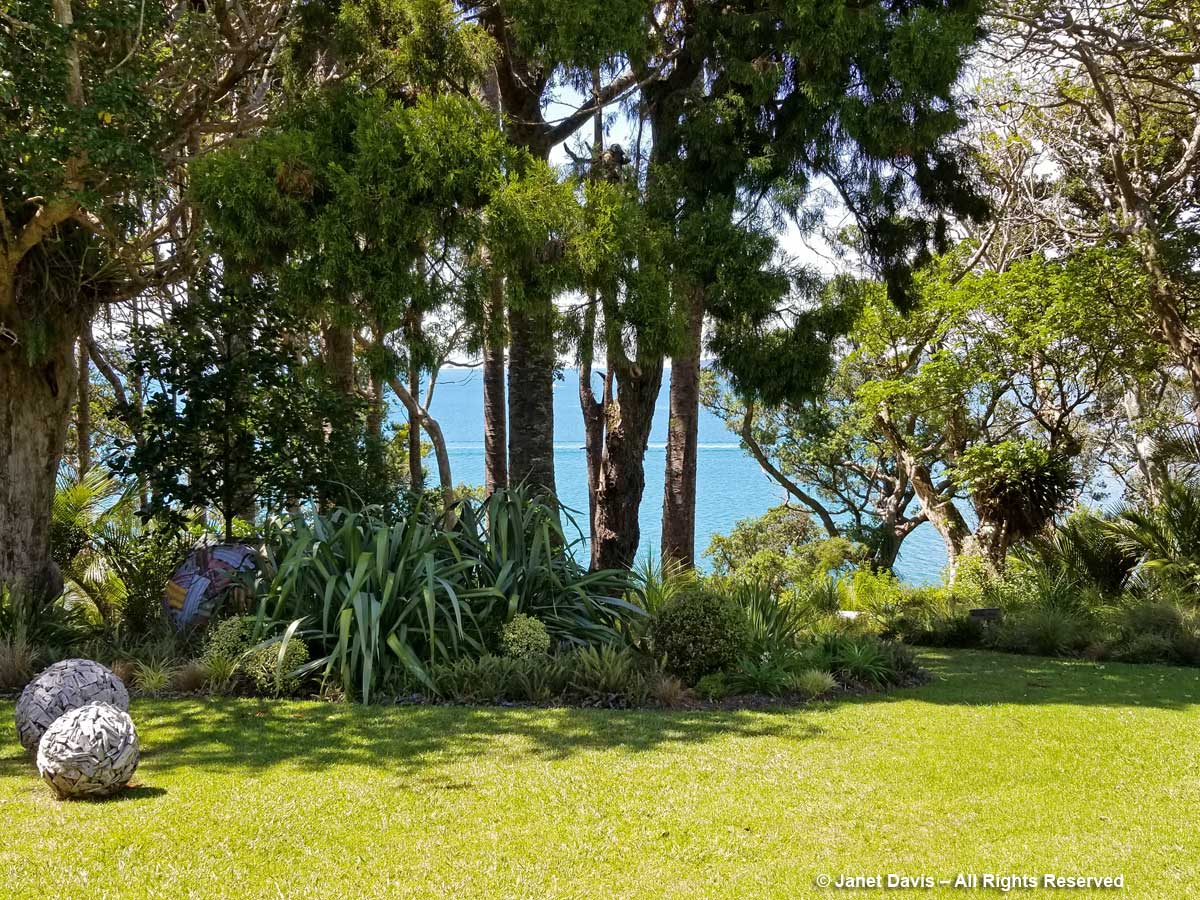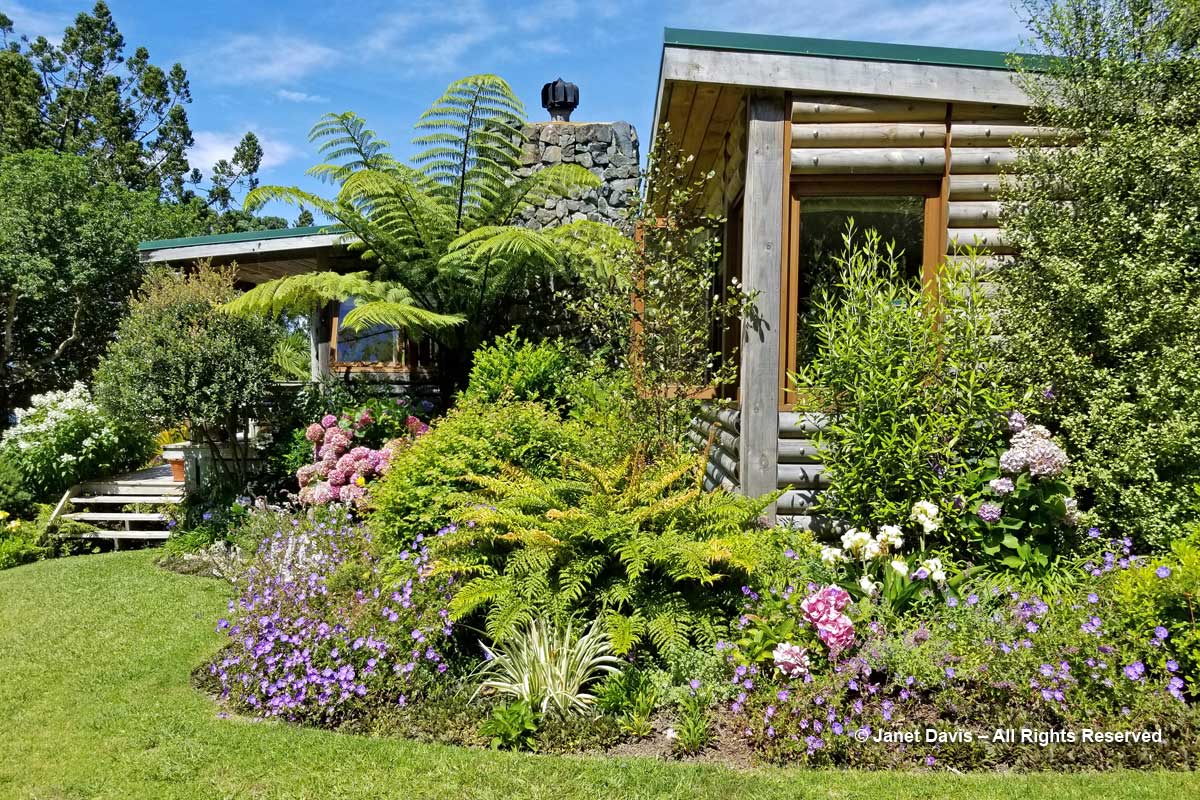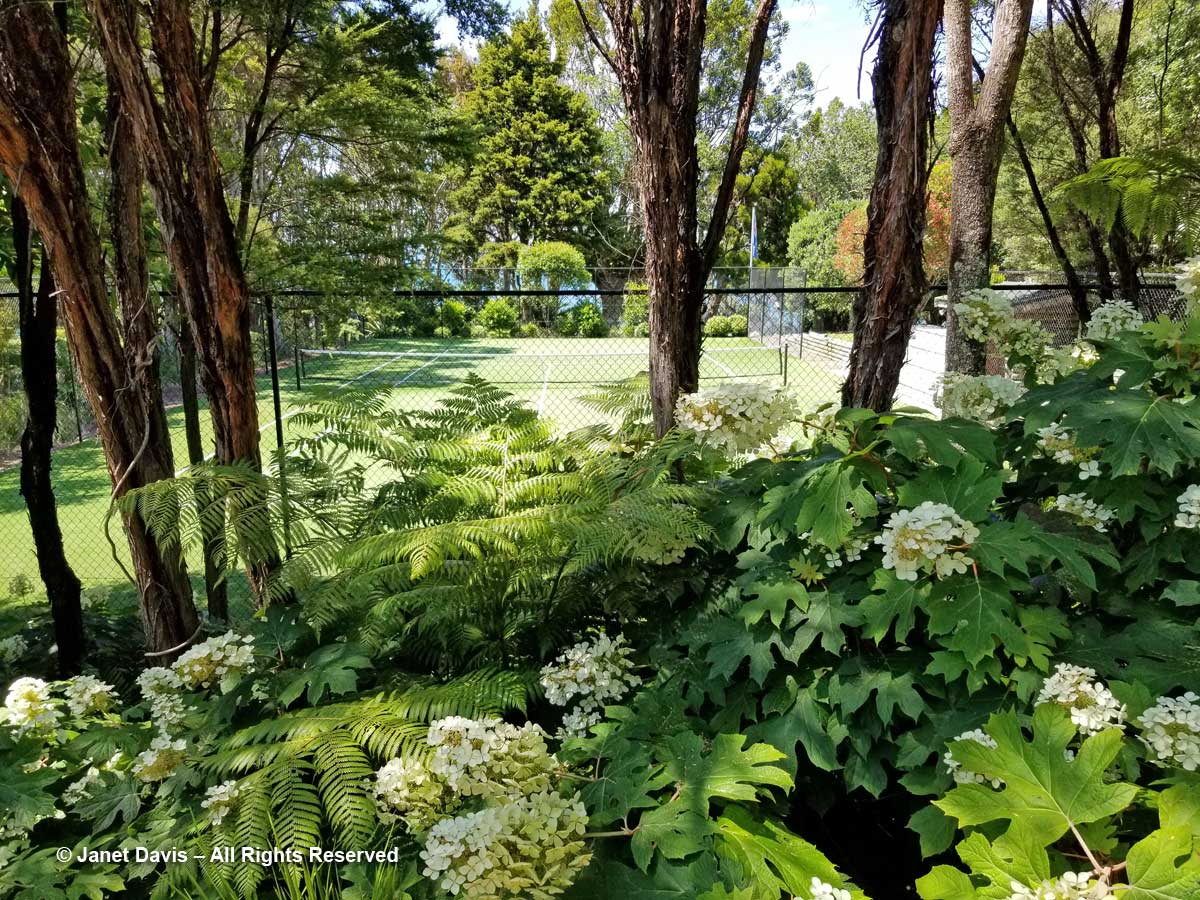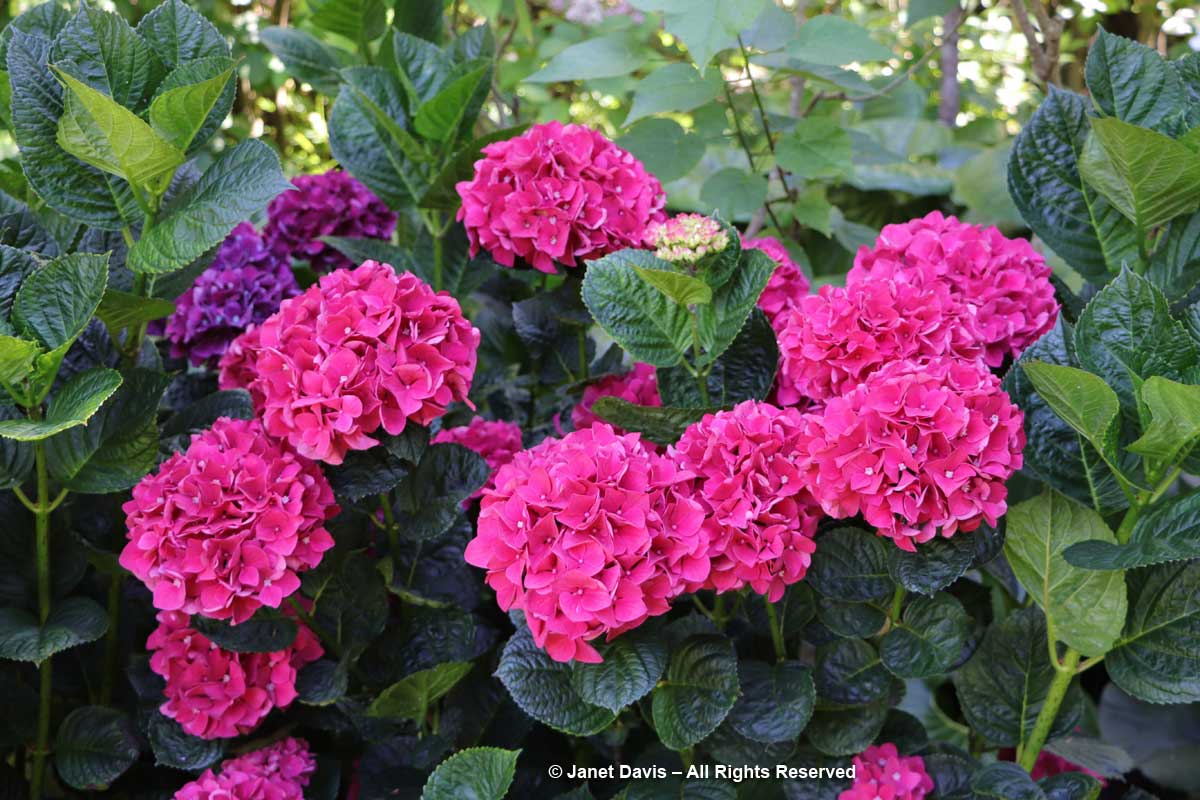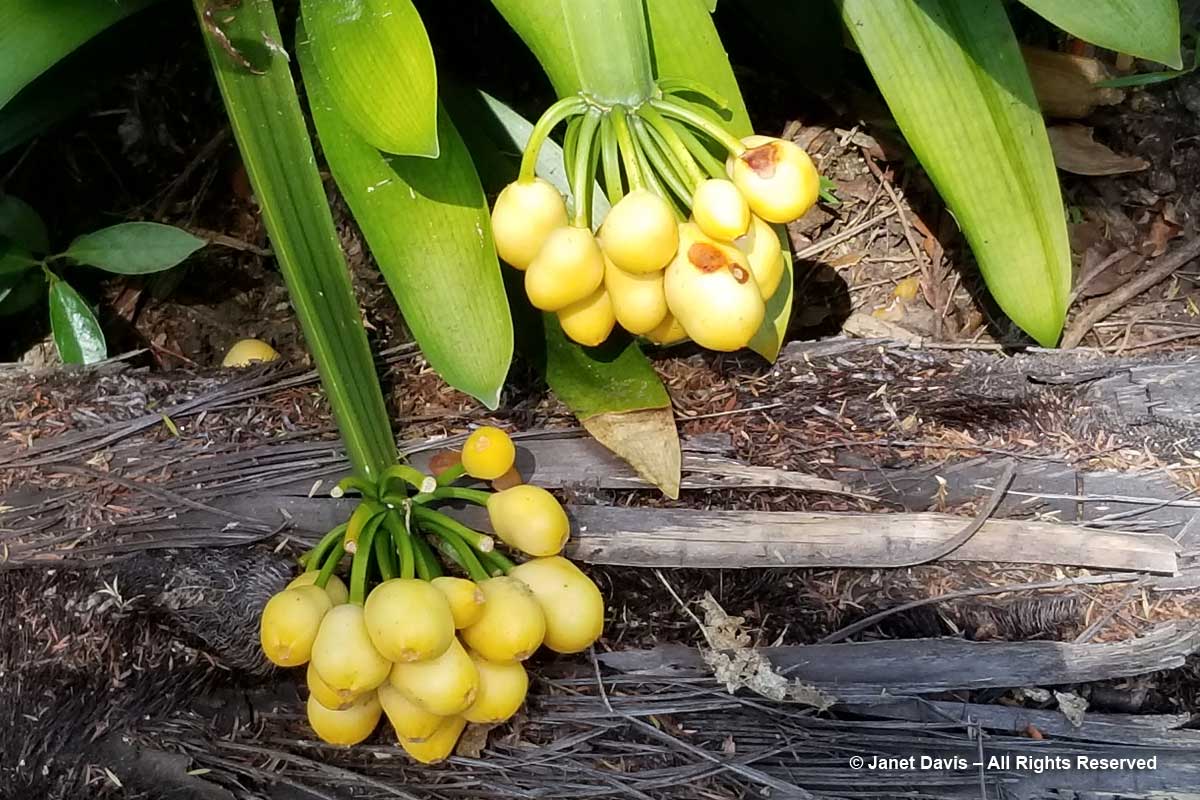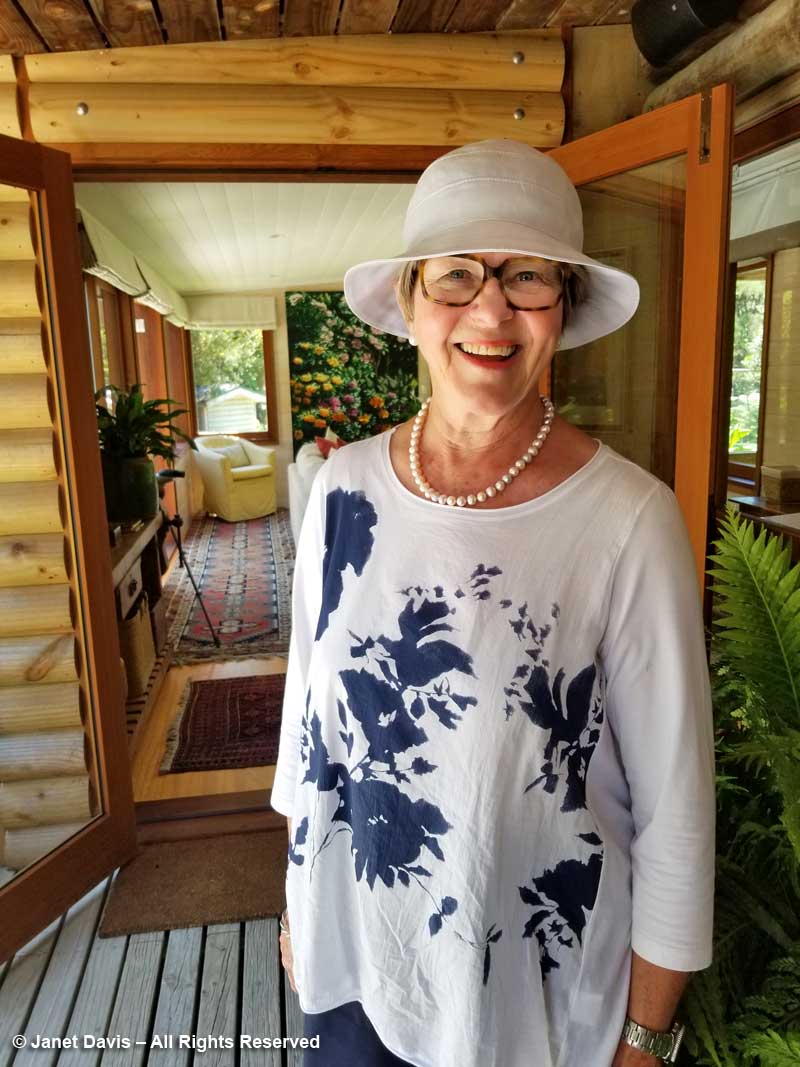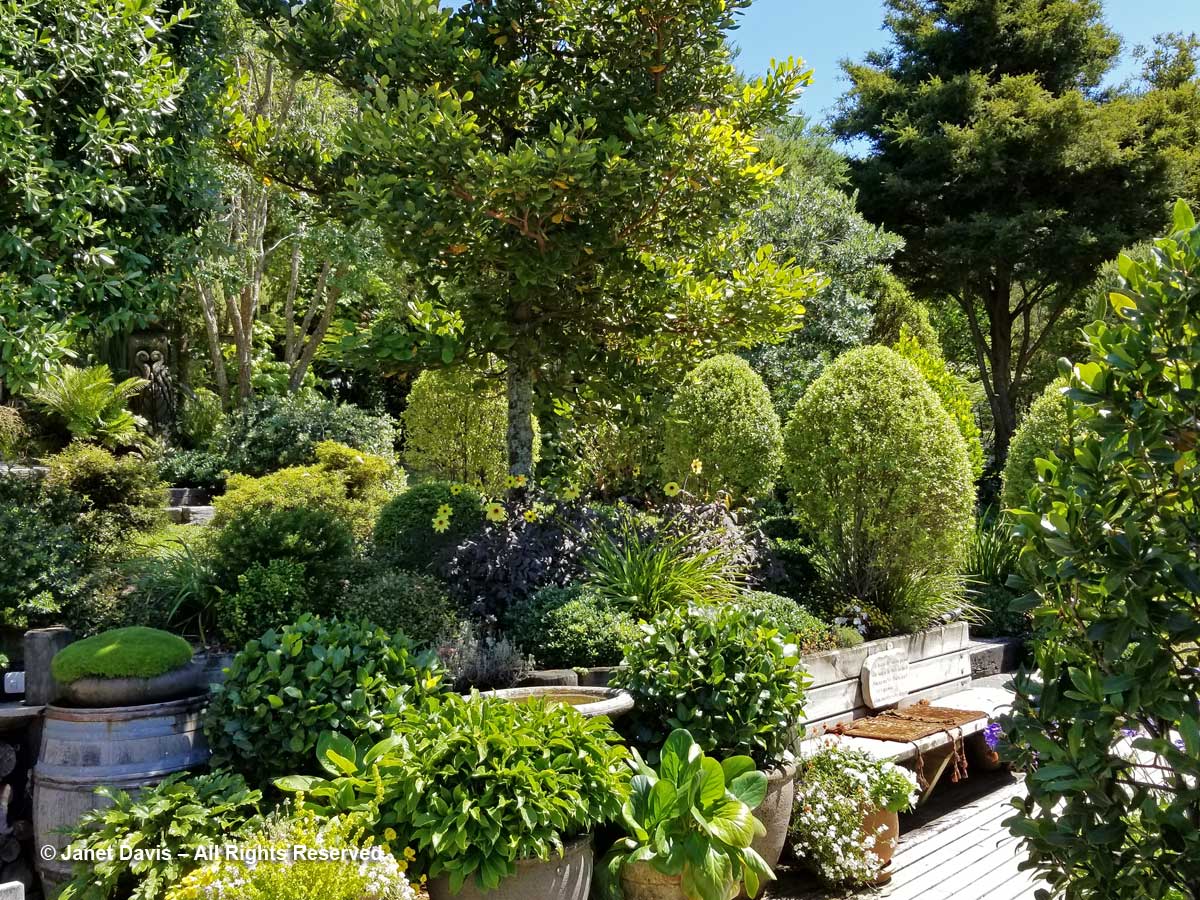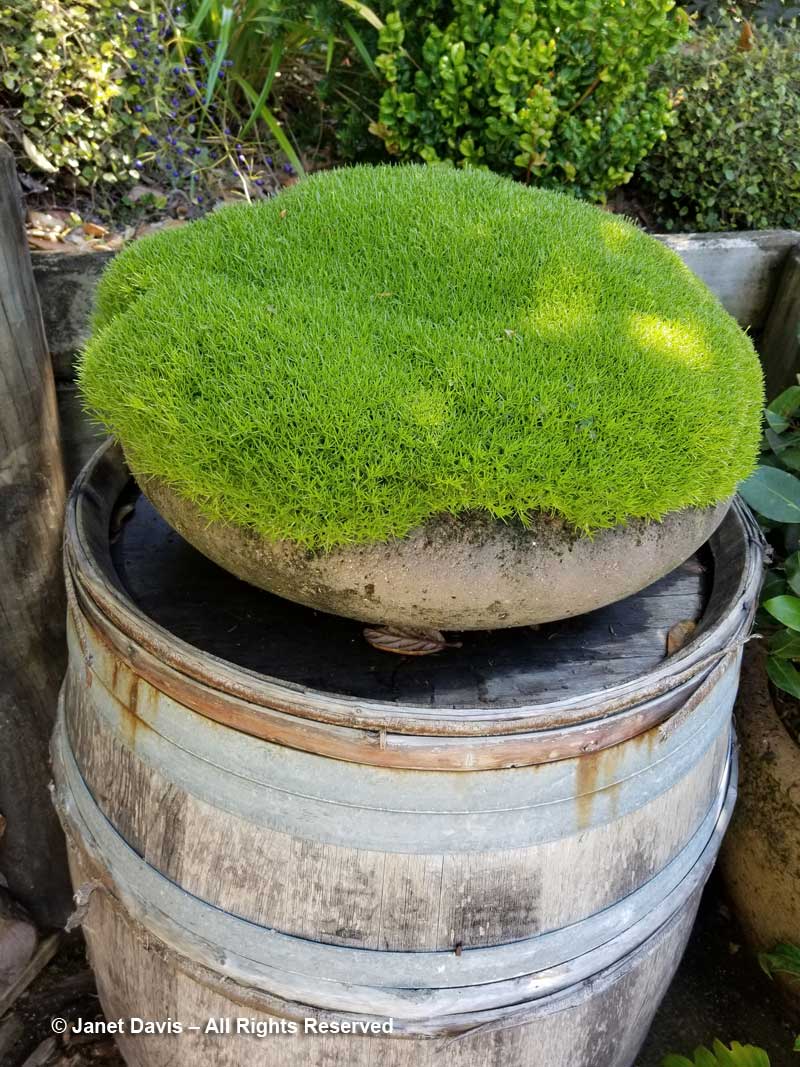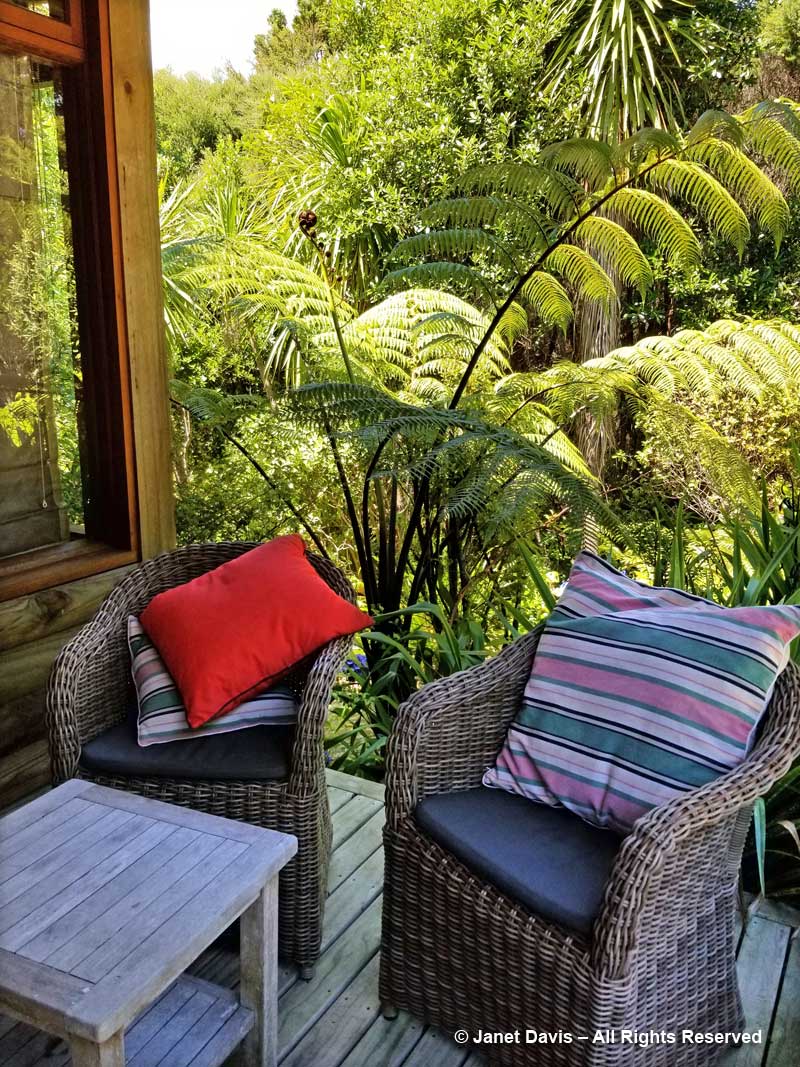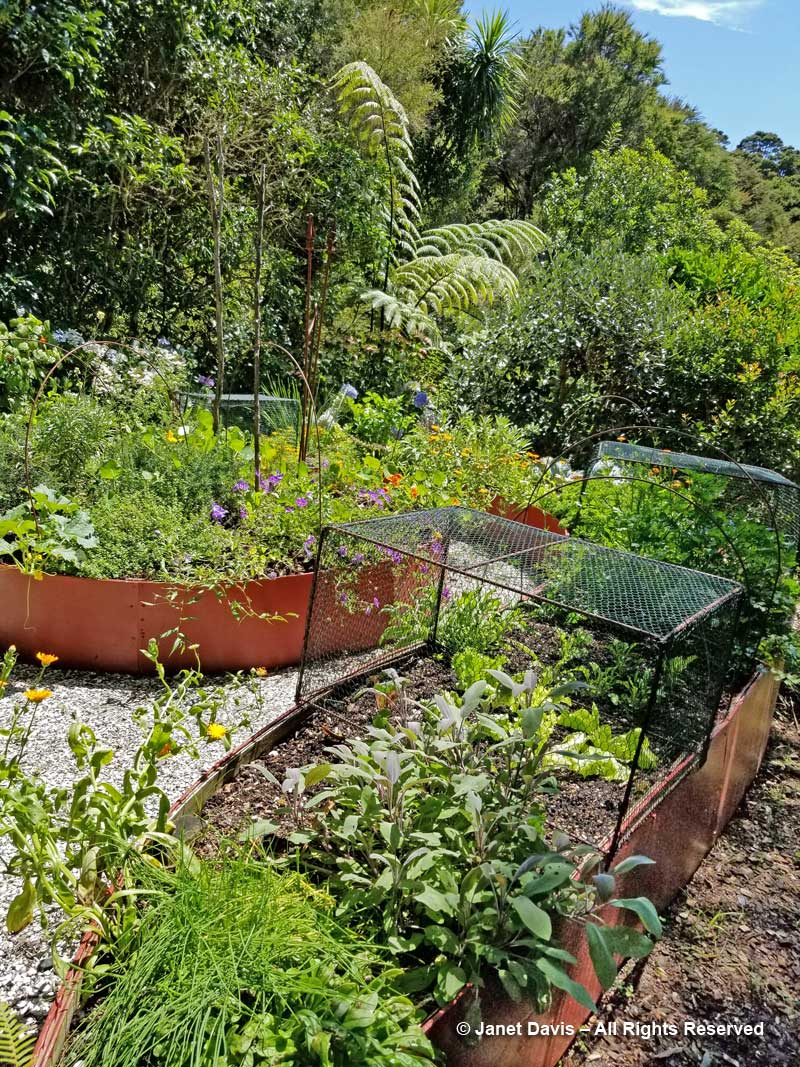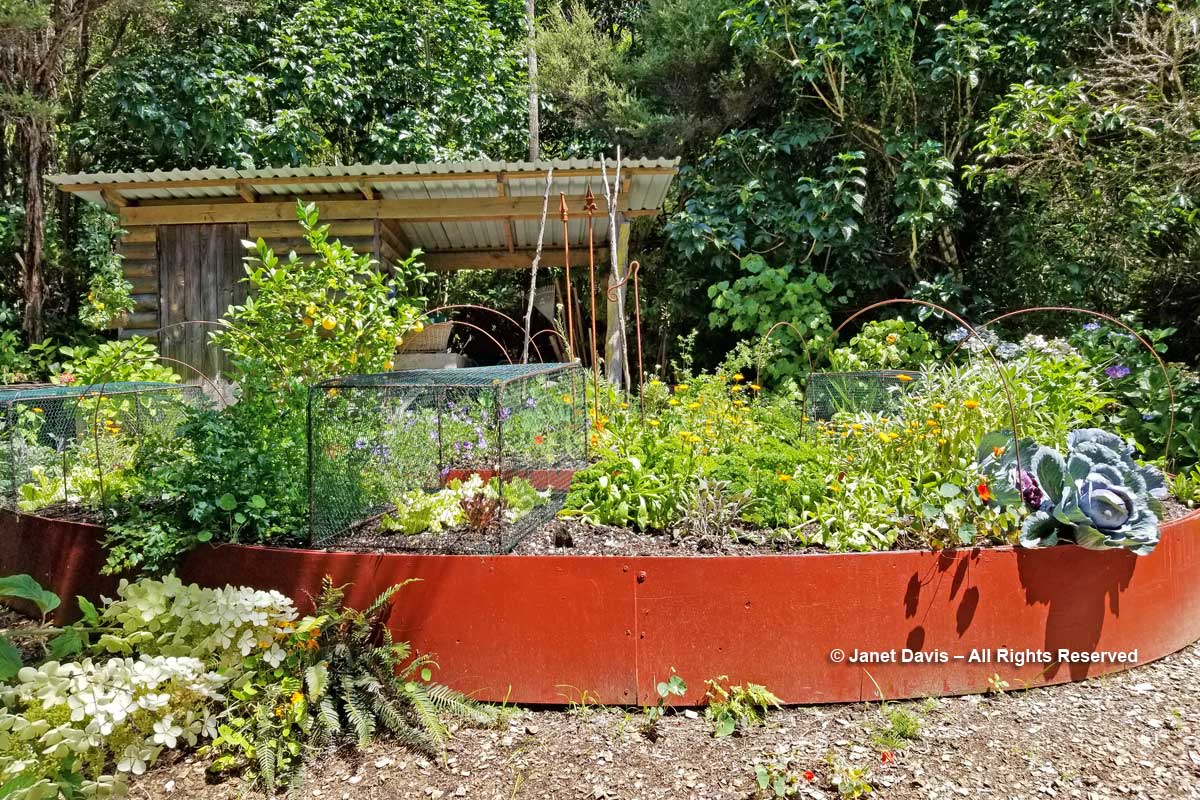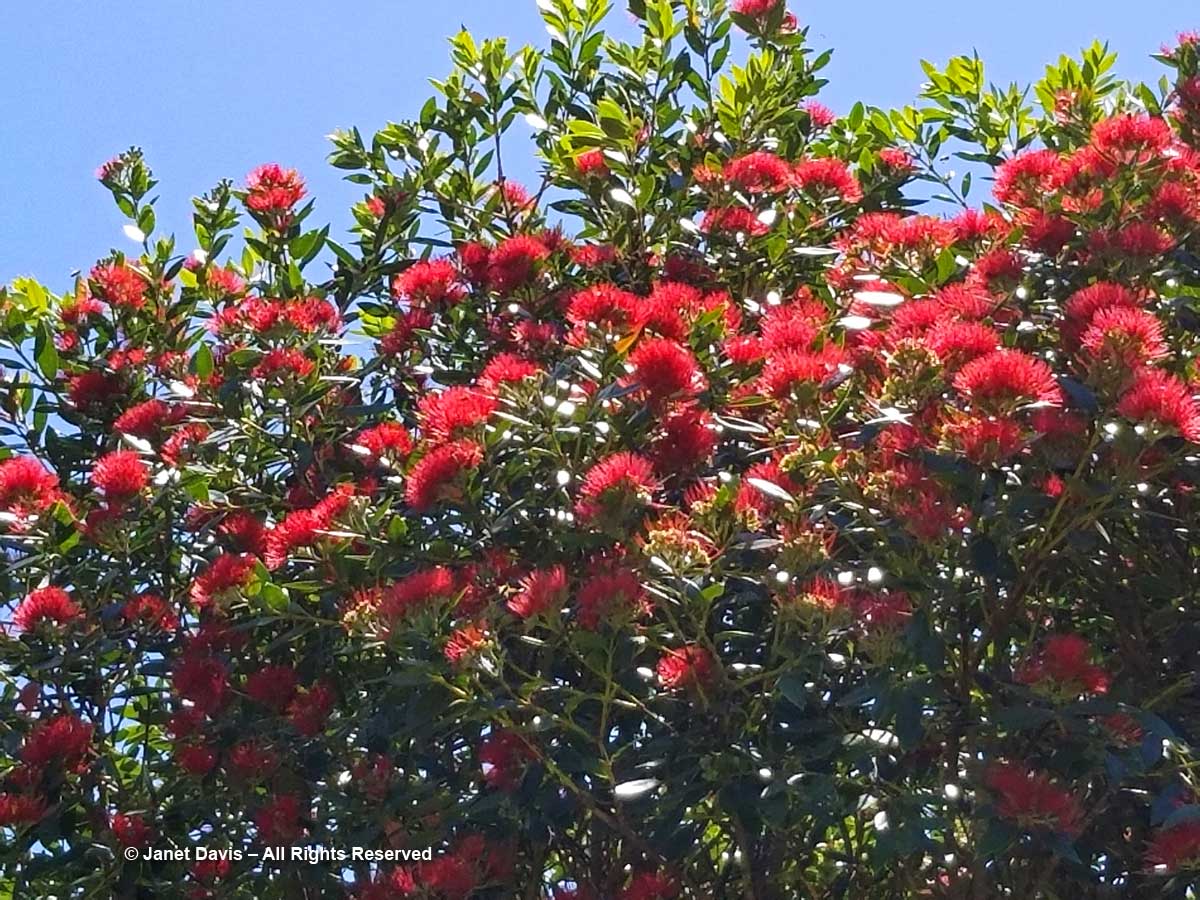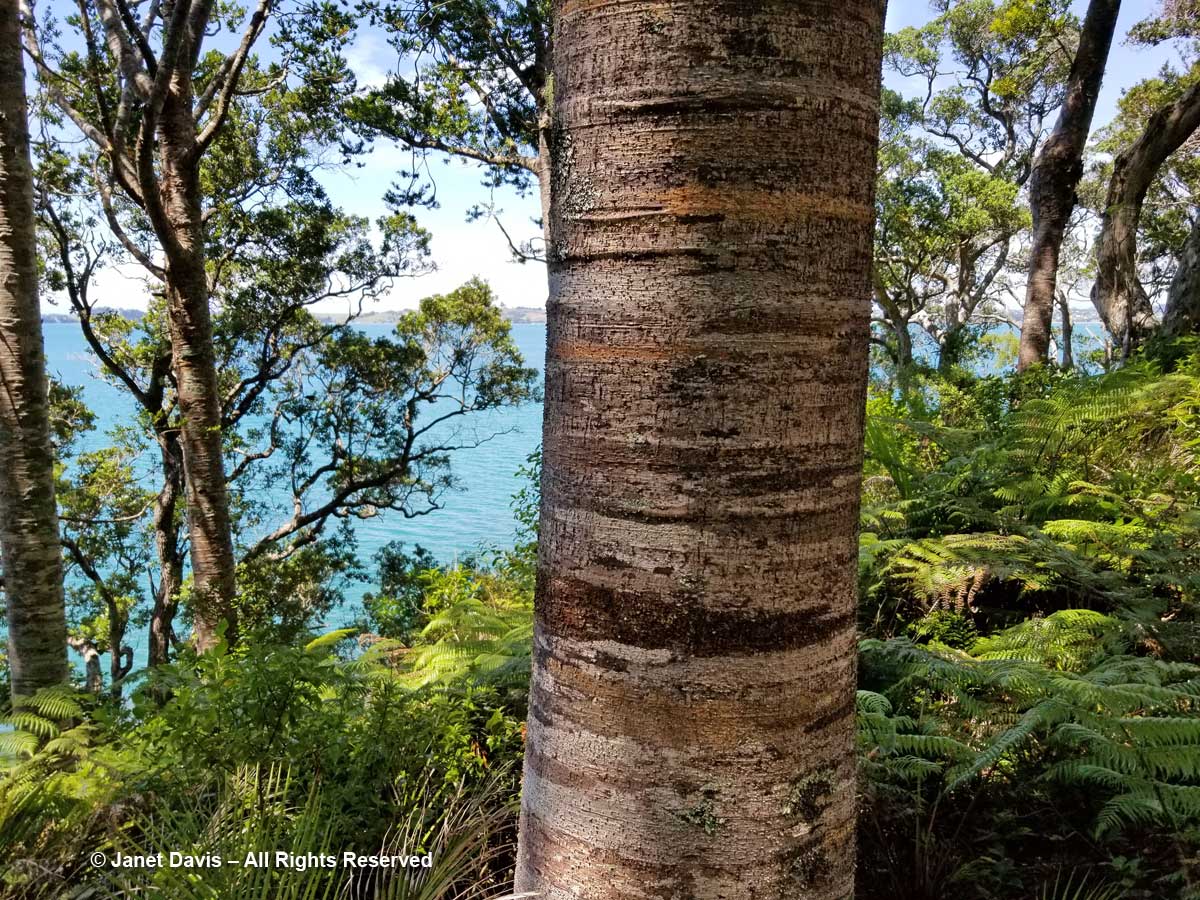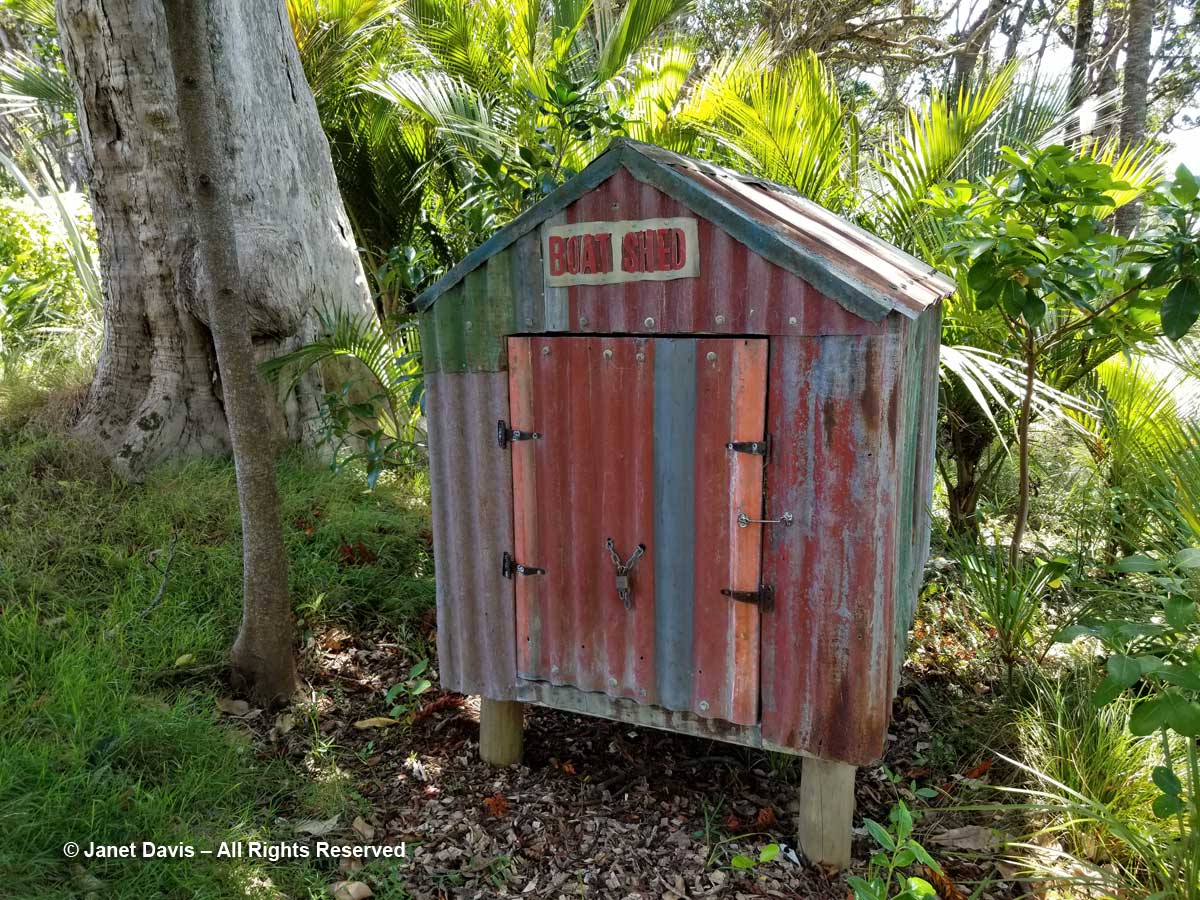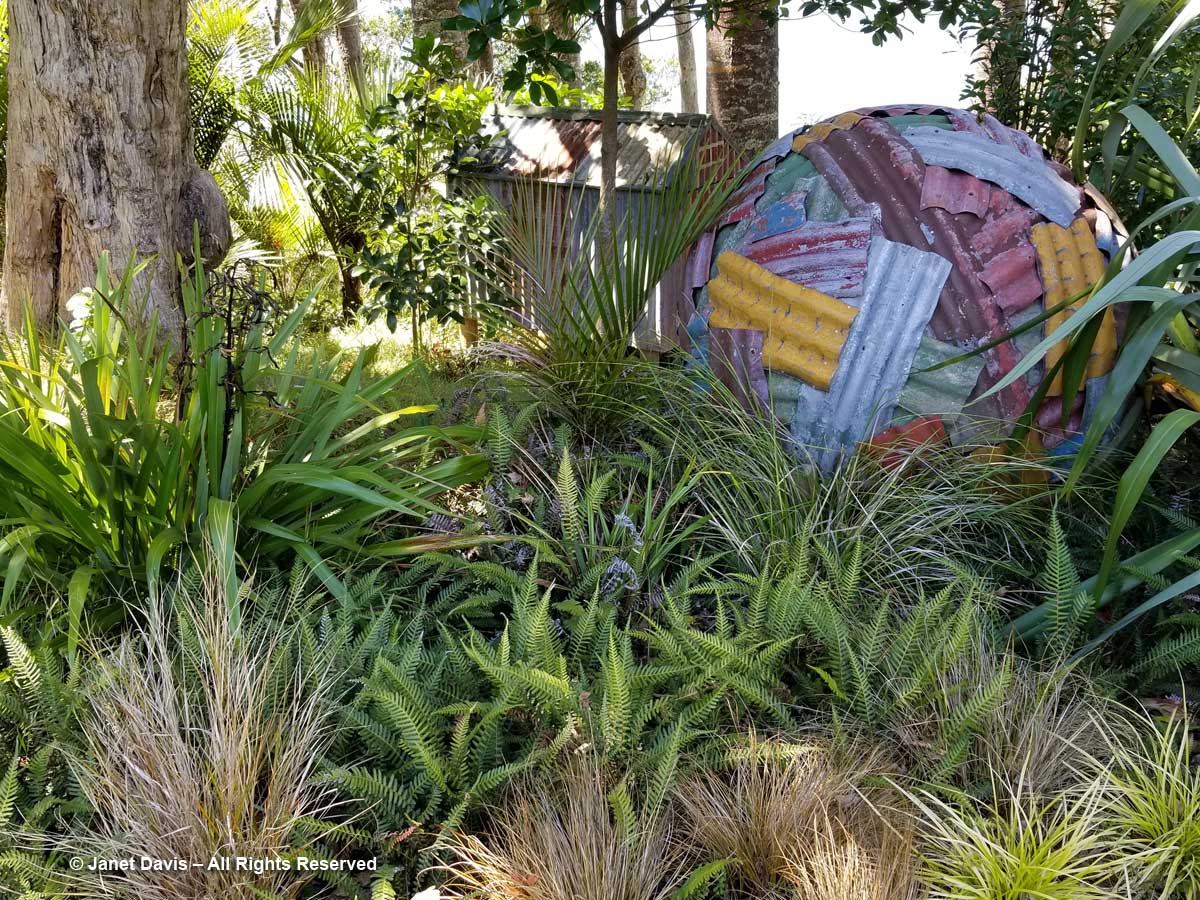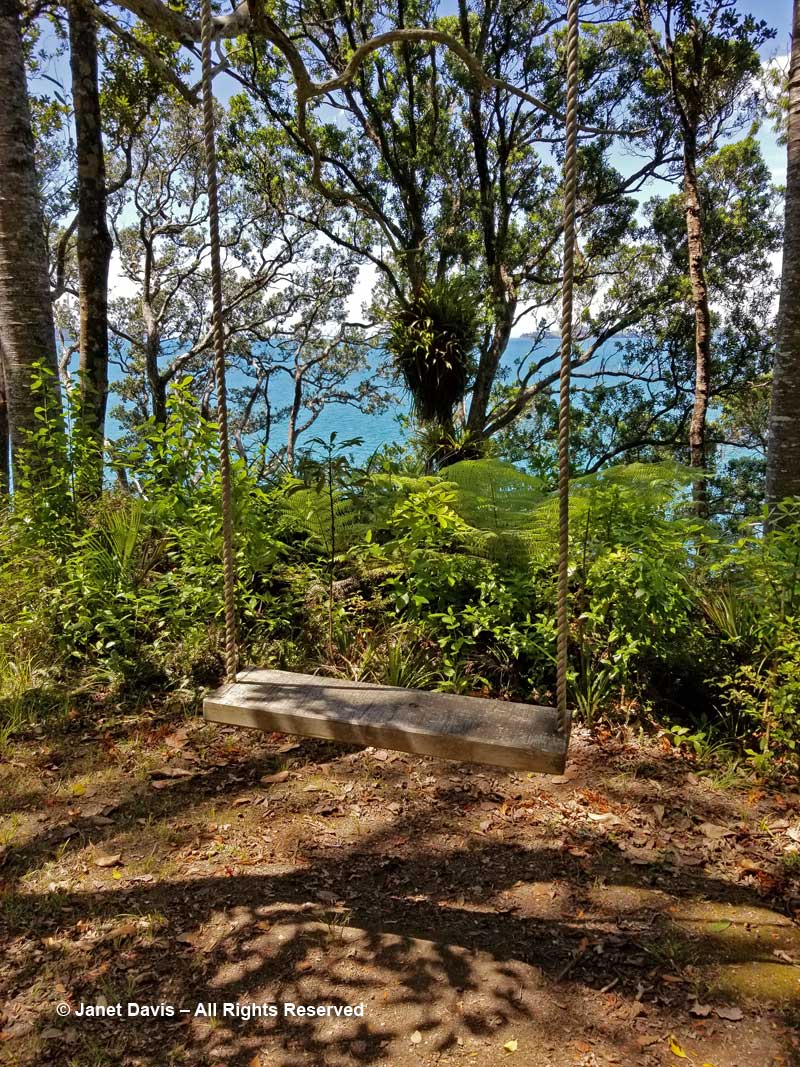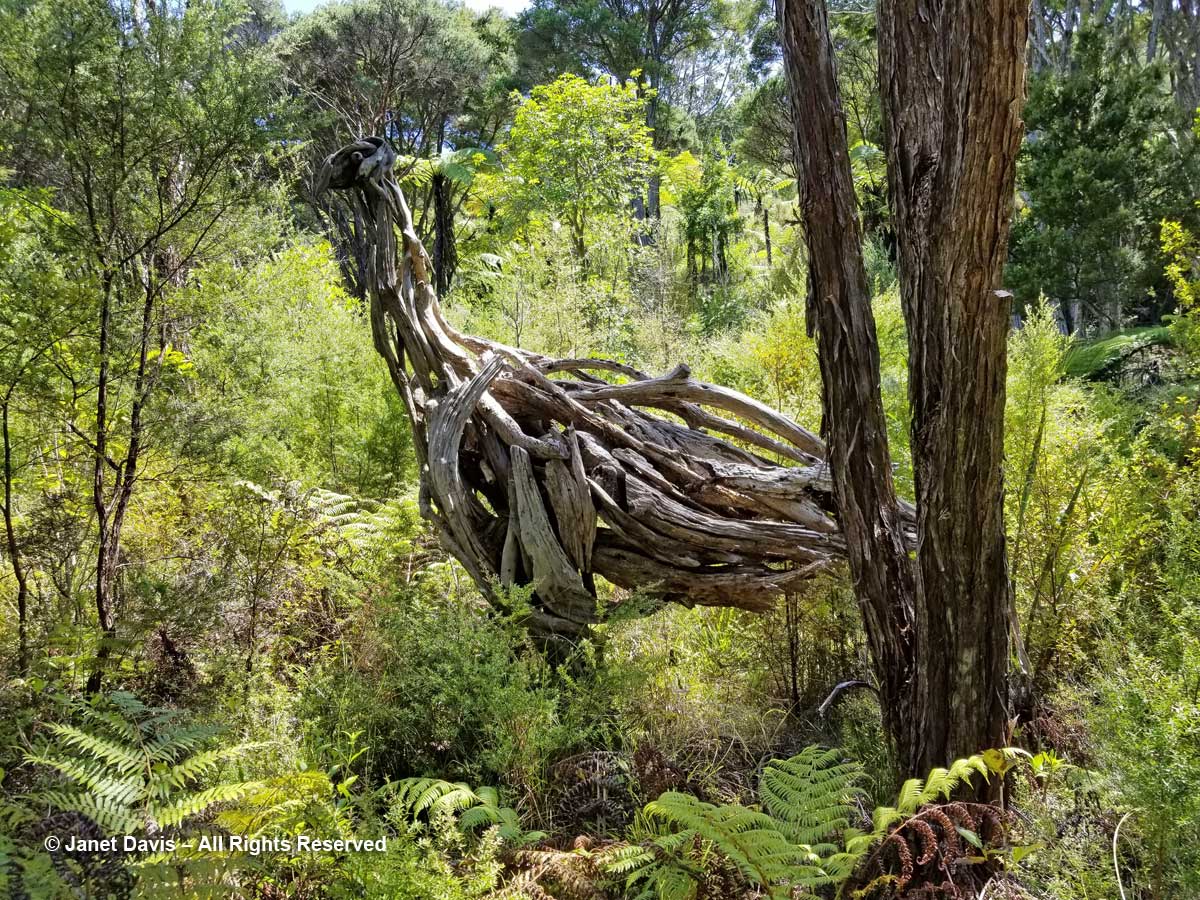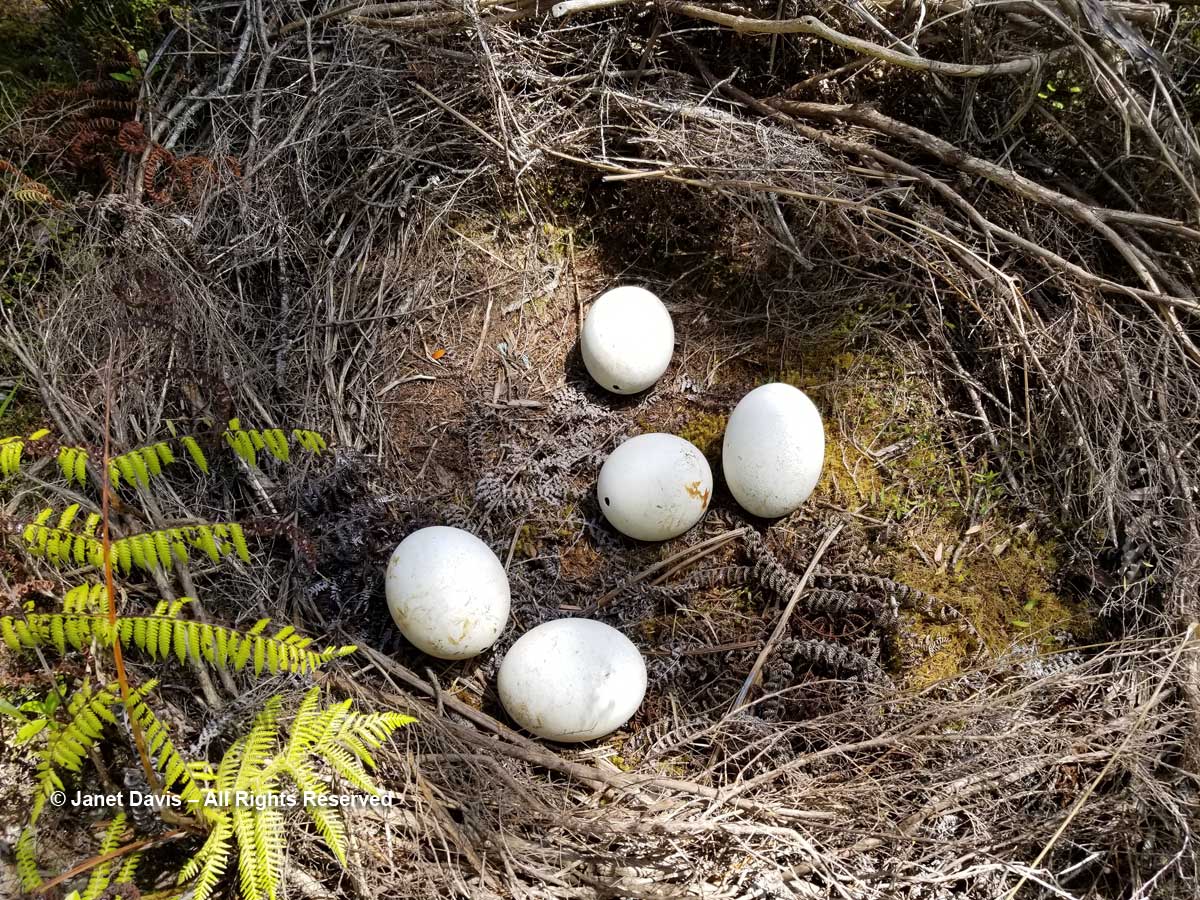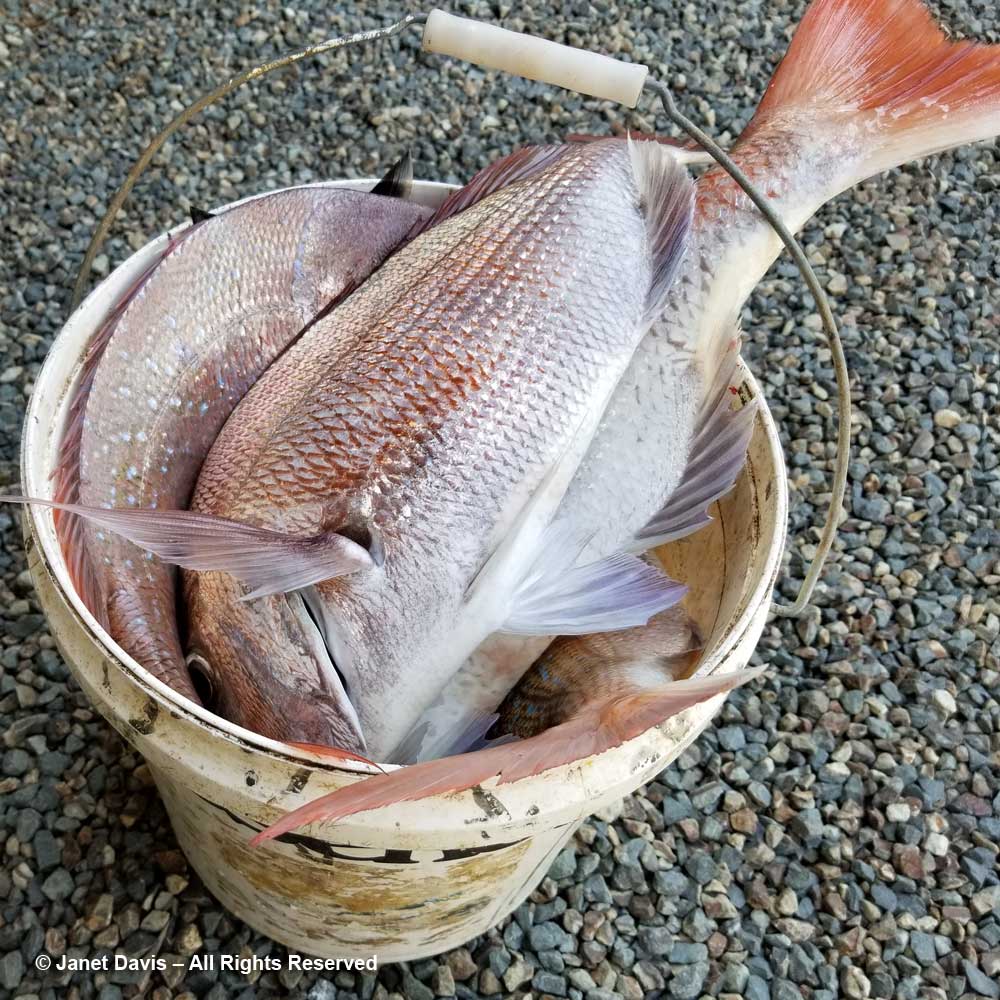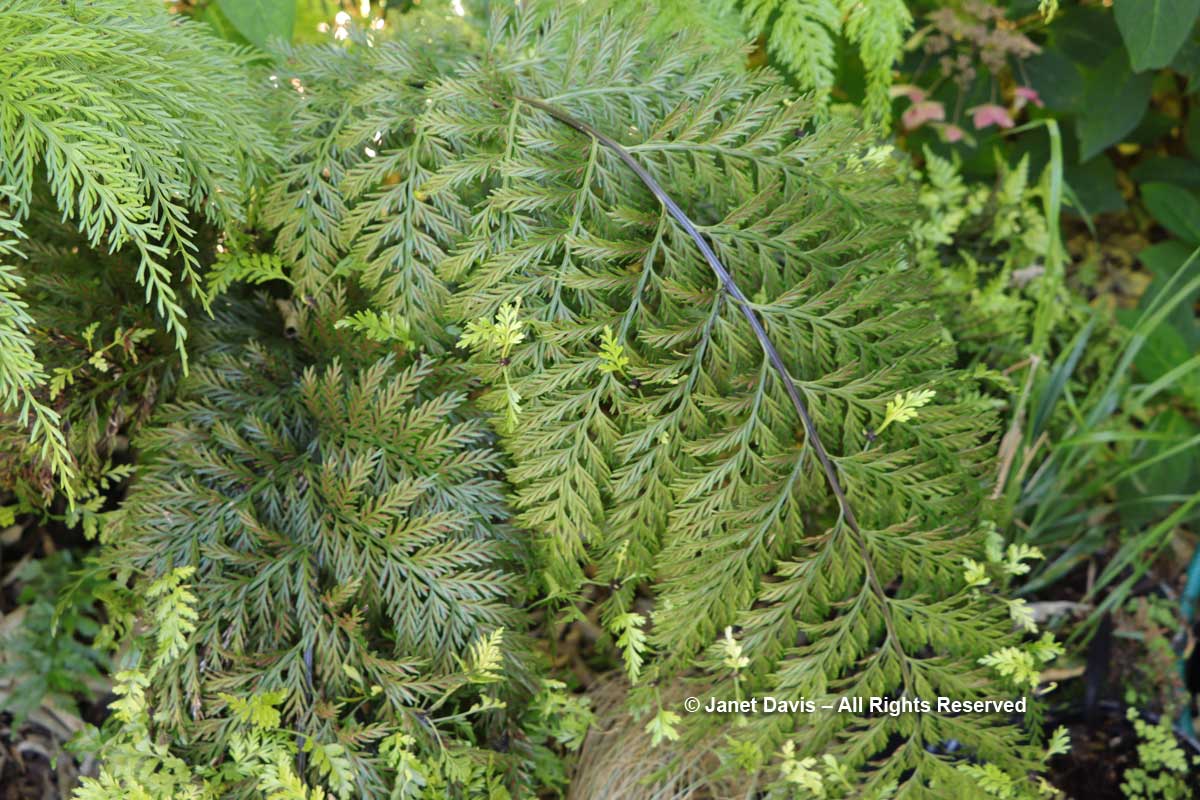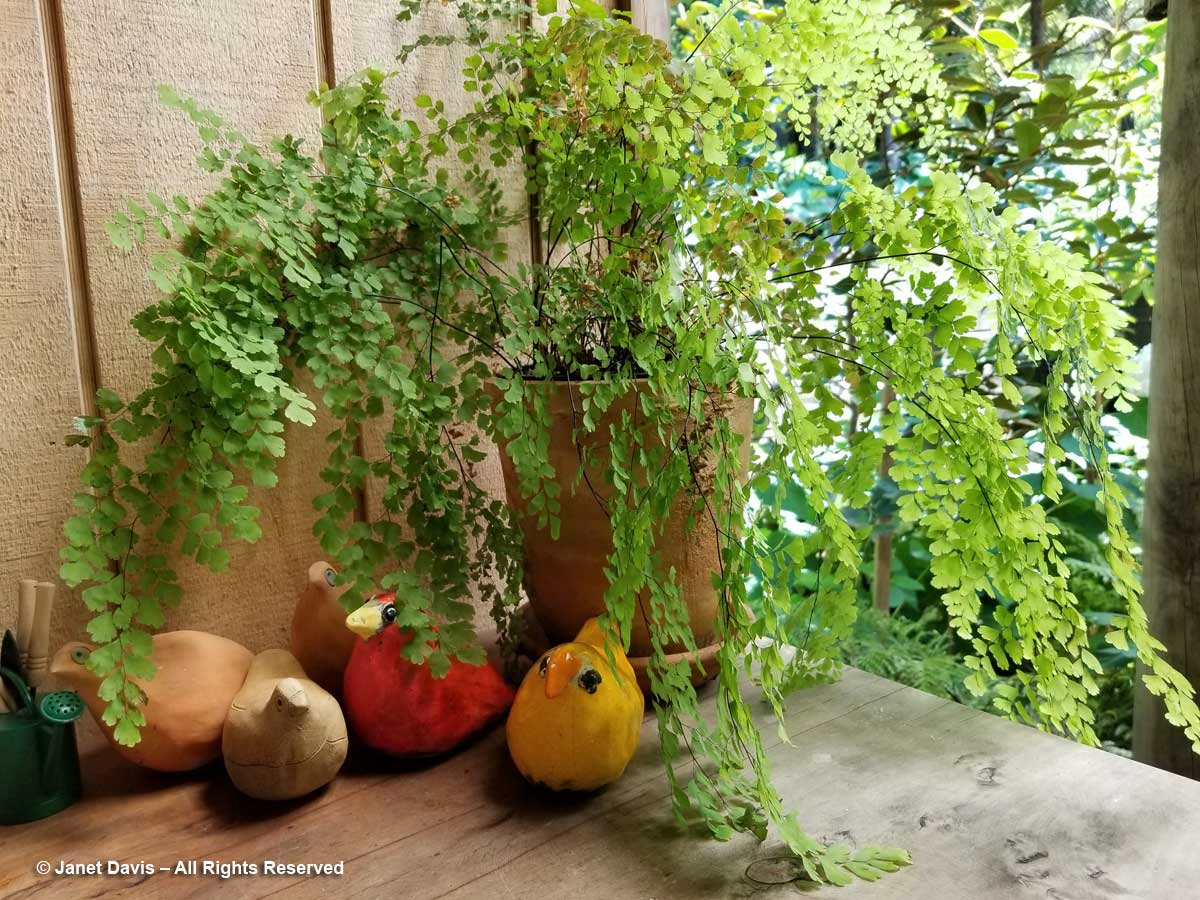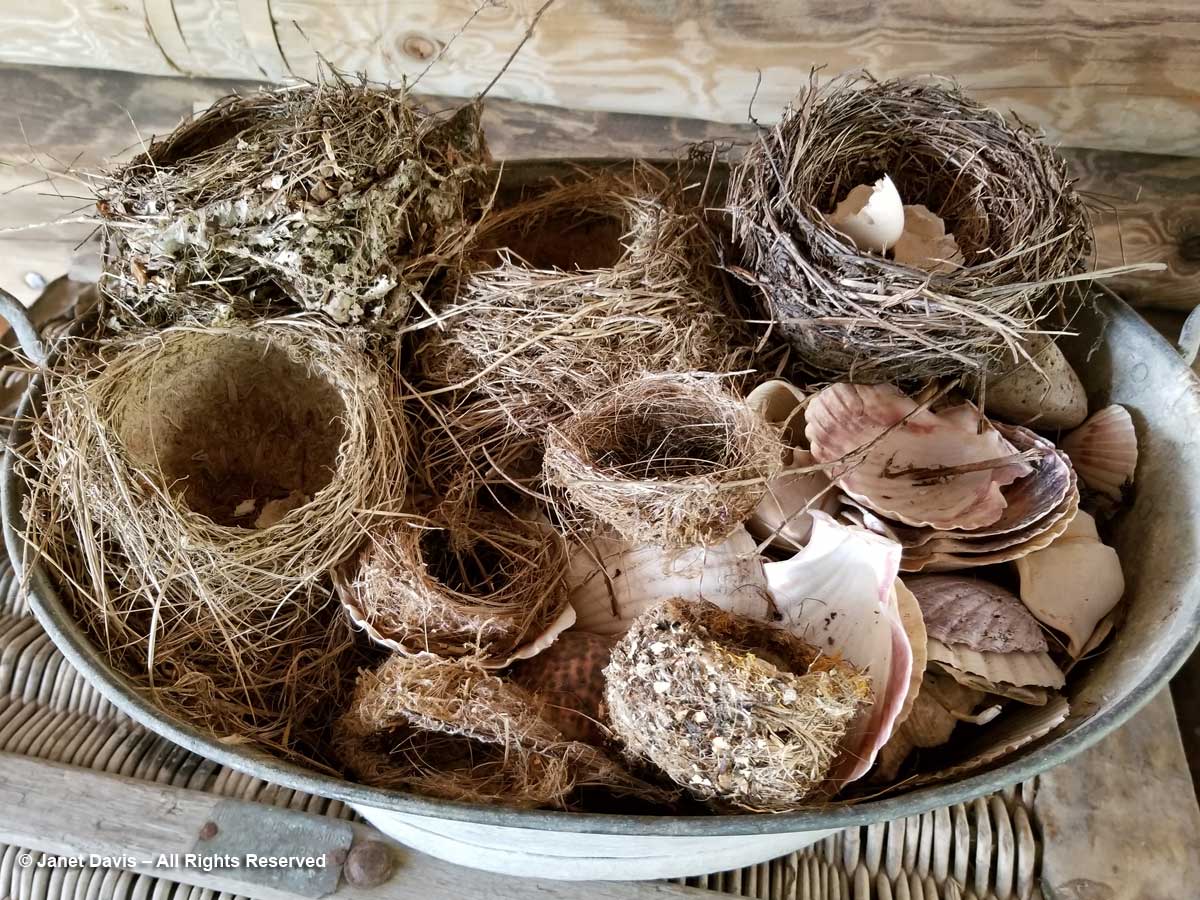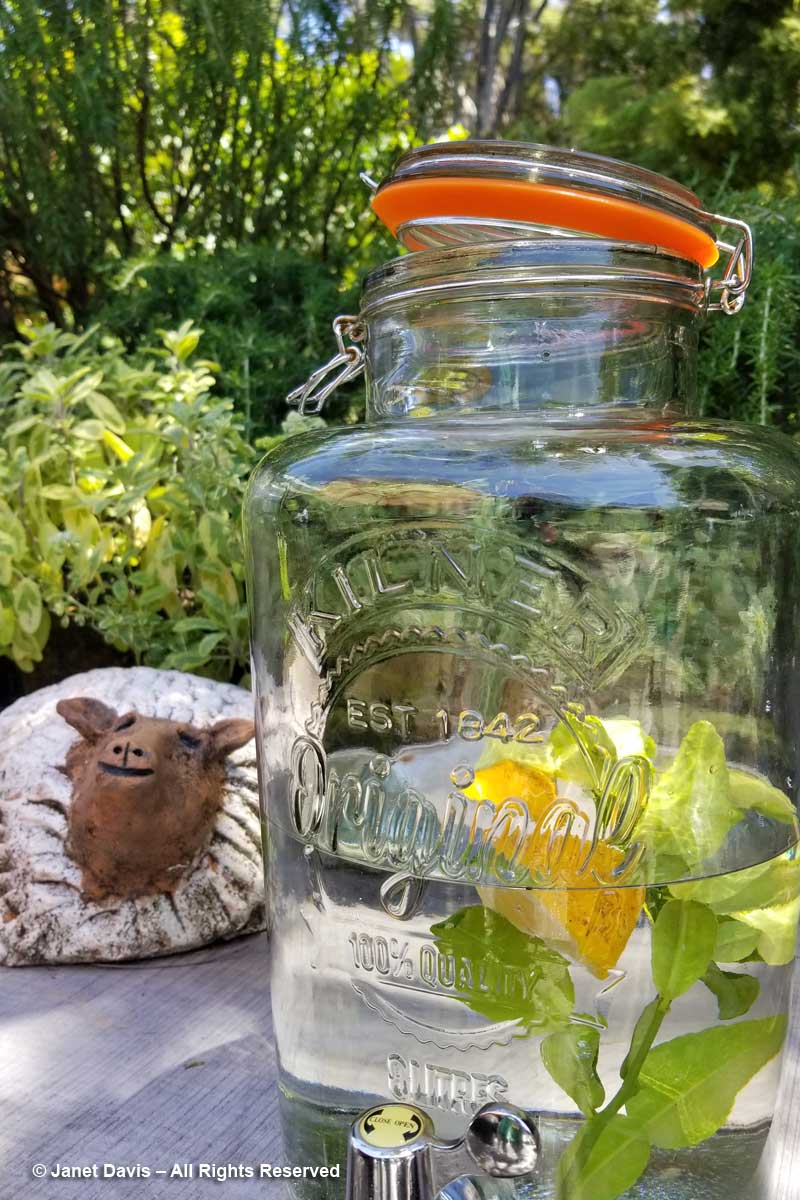While touring New Zealand this January with The American Horticultural Society’s Travel Study Program, we were privileged to visit both gardens with a high degree of human intervention and wild places where nature was the sole designer. But we also visited a garden where the owner had used her skill to meld subtle design with the natural environment in a way that complemented both.
Omaio is a Māori word that means “peace, tranquility and happiness”. For Liz Morrow, her 18-acre (7 hectare) property on the Takatu Peninsula an hour north of Auckland is all of those things. What started out in 1980 as a log cabin seaside holiday house (what the Kiwis call a “bach”) became, in 2005, a full-time home. Now it’s not just a ‘garden of national significance’ recognized by the New Zealand Gardens Trust, but also a Bed & Breakfast. And it’s been the subject of magazine articles and a garden show.
But back to 2006, when Liz and her son Johny….
….. whose eponymous deck (aka ‘the gin deck’) is a comfortable spot to have a drink while gazing out at the ocean….
…. worked together to sculpt a garden out of native bush that features a puriri tree (Vitex lucens) estimated to be 800-1000 years old, ancient kauri pines (Agathis australis), totaras (Podocarpus totara), silver ferns (Cyathea dealbata) and many other species. Crushed seashells from the beach, below, form the paths which circle through the bush……
….. while fallen tree fern trunks delineate the edges in many places. 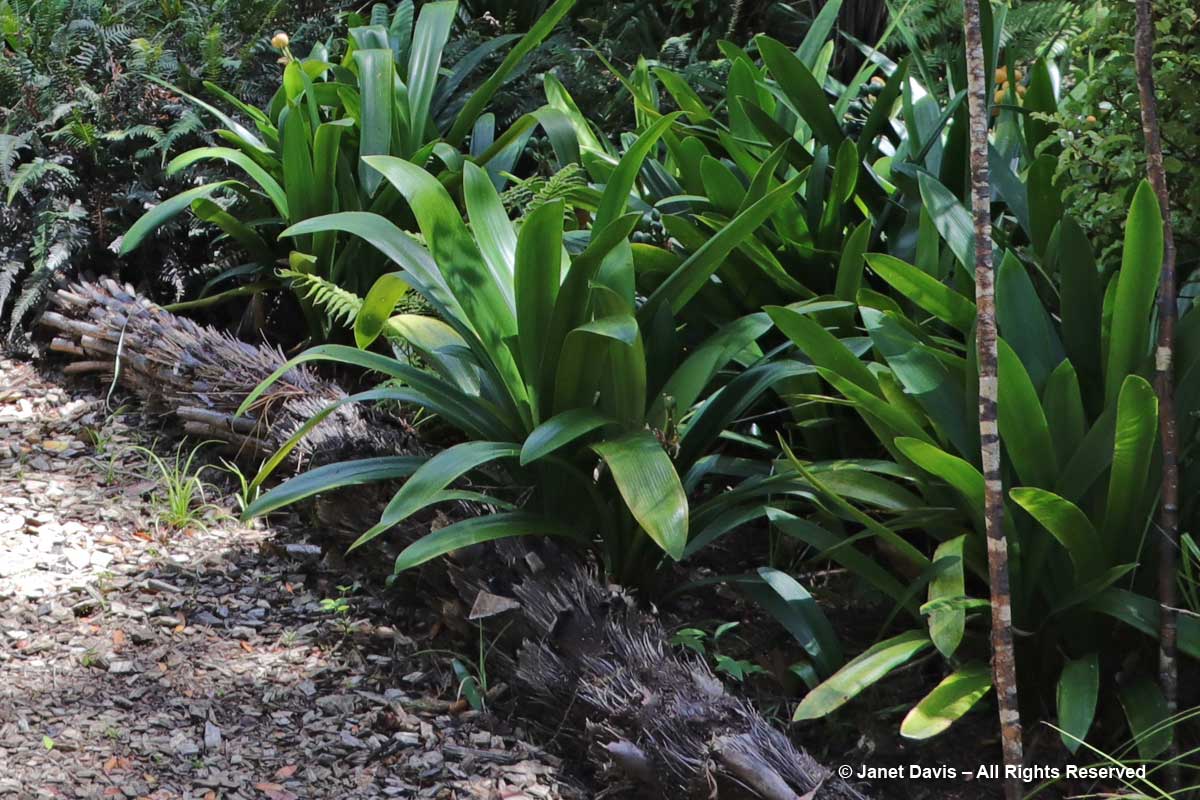
Using borrowed garden hose to outline gently curving borders that echoed the curves and waves of Kawau Bay below, Liz cut into the former lawn, planting both exotics and natives that would complement, but not out-compete, the natural setting.
In the sunny garden surrounding the house…..
….and in the dappled shade near the tennis court are plants like hydrangea that do very well here.
We were all wowed by the luscious mophead Hydrangea macrophylla ‘Bloody Marvelous’.
Though Liz’s massed clivias and bergenias would have flowered in New Zealand’s spring (our autumn), their foliage and fruit still offered interest in midsummer. This is the fruit of a yellow-flowered clivia.
Liz was the perfect hostess, organizing an alfresco lunch…….
….. in the shade behind the house where terraced gardens stretching up the slope offer what Liz calls “a soft palette that’s easy on the eyes”: lots of green foliage with just a sprinkling of colour in a favourite yellow dahlia.
I loved this focal point crafted from a Scleranthus moss cushion…….
……… and the real cushions on these comfy chairs under ferns.
After lunch I wandered Omaio’s paths, past the sunny Koru Garden where vegetables grow in profusion in raised beds shaped like the koru or symbolism-laden fern crozier that I wrote about in my last post. In the bright midday sunshine, it was difficult to do justice to this garden…..
…..that provides fresh produce throughout the year. Not visible in the background is a small fruit orchard.
In the mostly green bush landscape, the pohutakawa (Metrosideros excelsa) stood out like a glowing red bouquet.
This was my favourite photo from Omaio, a shimmering kauri trunk set against the turquoise ocean. (Kauris will figure prominently in my next blog on Maori culture.)
The artwork chosen for Omaio is subtle and rustic, like this corrugated iron boat shed…..
….. and sphere, both by Jeff Thomson. (His “Cows Looking Out to Sea” were in my earlier blog video from Connell Bay Sculpture Park.)
Grandchildren must love this swing under the trees.
In a nod to the North Island’s prehistoric past, a lifesize moa by Jack Marsden-Meyer made from driftwood and pururi boughs watches over the path from the bush. The sculpture recalls the flightless bird – this one, the North Island giant moa (Dinornis novaezealandiae) was estimated to stand at 3 metres (10 feet) – that was hunted to extinction by the Polynesians, the first humans to reach New Zealand in the 13th century.
Her “eggs” sit in a nest nearby.
As I came back around the house, some of Liz’s family were returning from a fishing expedition on Kawau Bay with a bucket of ‘snapper’ (Pagrus auratus), aka pink seabream, for dinner.
Rounding into the shade, a native New Zealand hens-and-chicks fern (Asplenium bulbiferum) caught my eye. Note the tiny ferns arising from bulbils on the mature fronds.
And I loved this little maidenhair fern in a pot……
…. and these nests from the birds that have called Omaio home over the years.
A quick glass of water……
……then it was time to climb the path to the bus and head further north to the seaside town of Paihia in the Bay of Islands.

